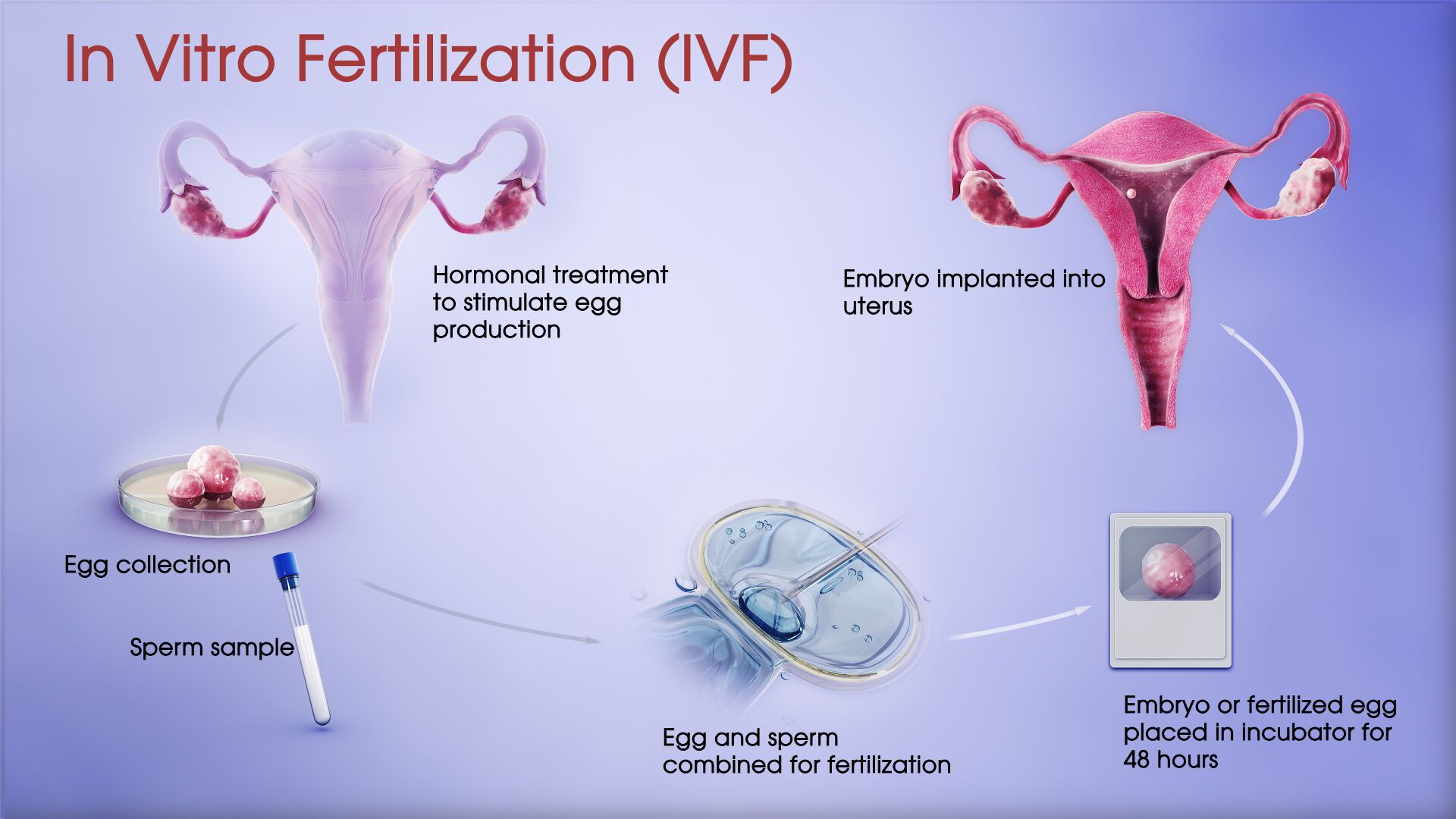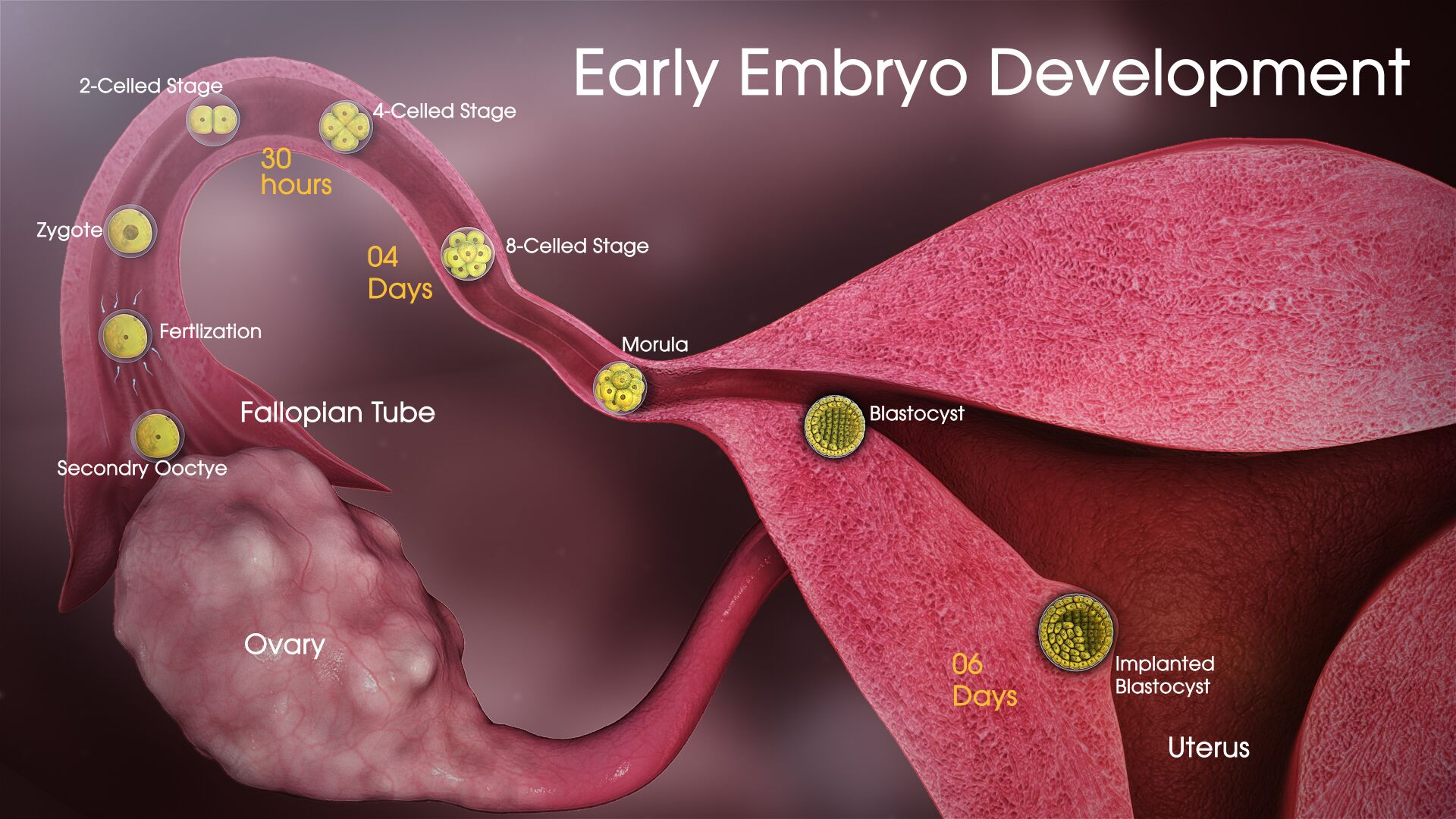In vitro fertilization or simply IVF literally implies “conception in a laboratory”. A typical IVF procedure involves collecting eggs from the female’s ovaries and exposing them to sperm cells in a glass petri dish. Under ideal conditions, some of the eggs get fertilized by sperm and become embryos. The healthy embryos are then grown and transferred to the female’s uterus.
IVF, often, serves as the most effective of the infertility treatments, even when the cause of infertility is unknown. Usually, couples turn to the procedure after several attempts of trying to conceive naturally and with various other treatments, when any of the following becomes clear:
- A surrogate mother is needed
- The trouble conceiving is due to male infertility
- The woman’s fallopian tubes are blocked
- Cryopreserved eggs need to be used
IVF is a series of procedures which usually takes a couple of months from the day of consultation till the embryo is transferred in the mother’s body. The path for every patient may be similar, however, the body’s response at each stage decides the fate of the treatment.

Below are the steps followed in a typical IVF procedure:
1. Inducing ovulation
The doctor conducts some pre-IVF tests in order to monitor the ovaries, hormone levels and the timing of the egg release in the mother. Ovaries are usually stimulated during this period so that several eggs are available for IVF and the chances of pregnancy are increased. If the female is unable to produce any eggs, she can consider donor eggs.
In order for the doctor to design an individualized IVF protocol, it is important to perform certain tests on the individual. These are commonly ultrasounds, uterine evaluation, male sperm analysis, blood panel, and infectious disease screening.
Over a couple of weeks after the tests, birth control pills are prescribed to the female in order to regulate her menstrual cycle and prepare her ovaries.
Once the prescribed dosage is complete, the process of Controlled Ovarian Hyperstimulation (COH) begins. There are two main parts to the COH process:
- In the initial 2 weeks, the female is asked to consume oral fertility medications that stimulate the ovarian follicles to mature more eggs than they typically would in a normal cycle (at least 4 eggs are needed).
- The second phase involves monitoring the effect of fertility medication through ultrasounds and blood tests. This is the most time-consuming part of the IVF process.
After about 10-12 days of fertility medication, once monitoring shows that the follicles have grown to an appropriate size, it is time to trigger the final maturation of the eggs with human chorionic gonadotropin (hCG) and schedule the ultrasound egg retrieval before 36 hours later.
2. Retrieving mature eggs
In this step, a fine needle is passed through the upper vaginal wall of the female and fluid is gently aspirated from the follicles. The oocyte (egg) is, then, isolated from the follicular fluid and placed in nutrient media before being transferred to the incubator.
3. Fertilization
A semen sample is obtained from the male partner of a donor, and mixed with the egg under controlled laboratory conditions, for a healthy embryo to develop.
In case male infertility is a factor, a single healthy sperm is injected directly into an egg. The procedure is known as intracytoplasmic sperm injection (ICSI). Another good option to increase the chance of a successful pregnancy is- Assisted hatching. In this procedure, the outer membrane of the embryo is punctured to increase its rate of uterine implantation post transfer. Preimplantation genetic screening and diagnosis is also helpful to ensure that only healthy embryos are transferred, further increasing the chances of implantation.
4. Implanting the embryo in the female’s uterus
Approximately 3 days after fertilization, embryos are ready for transfer, but some patients and practitioners prefer to wait a few days, until they have reached the blastocyst stage (generally 5 days after fertilization).
After the healthiest embryo(s) is chosen, they are transferred through a flexible plastic tube that is inserted in the female’s cervix and goes into the uterine cavity. After the IVF process is complete, bed rest is often advised for around 24 hours.

Post procedure and Results
Normal day to day activities can be resumed, however vigorous activities should be avoided as the ovaries may still be enlarged. There are certain side effects of the procedure too. For instance, the woman may experience mild bloating, cramping, constipation. Her breasts are likely to become tender due to high estrogen levels in the body.
If the blood tests reveal that:
- Pregnancy is established, the woman is referred to a specialist for prenatal care.
- Pregnancy is not established, progesterone intake is stopped and the menstrual cycle resumes back in about a week.








